In Idaho, it is possible to spot 7 different species of Finches. These are:
- American Goldfinch
- House Finch
- Gray-crowned Rosy Finch
- Pine Grosbeak
- Cassin’s Finch
- Black-Rosy Finch
- Pine Siskin
Want to learn more? This book on everything to do with Finches is a fantastic read!
Idaho’s climate of crisp northern winds and the temperate midwestern sun makes for a good mixture for all sorts of birds, especially finches. Protected lands, tall pines, and crisp mountain air give Idaho one of the most diverse finch populations in the U.S.
Below, we list the types of finches you can find in the Gem State, and how to find them.
Want to attract finches? Take a look at our article!
What Finches can be seen in Idaho?
1. American Goldfinch
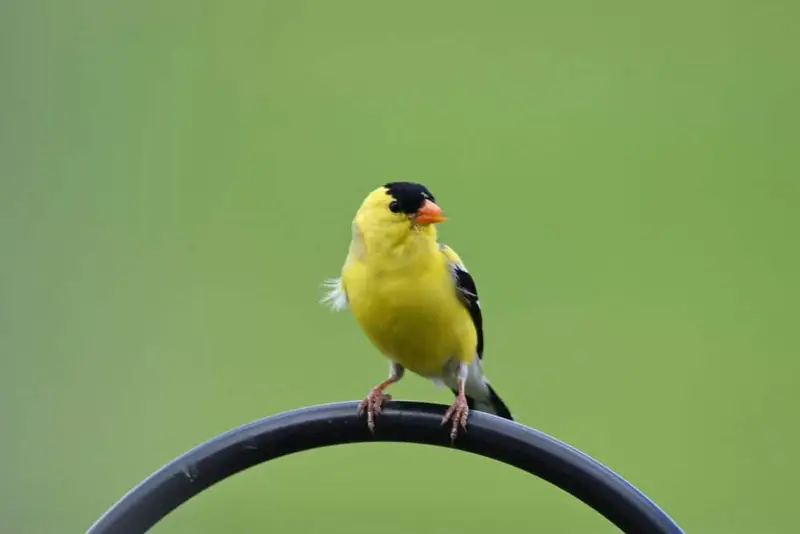
As the name indicates, this is the classic American finch. It distinguishes itself from a mostly gray and rose-colored family with its bright yellow body and head, with sharply contrasting black and white wings along with a black tail and bandit’s mask.
Idaho maintains a strong breeding population of goldfinches along its northeastern border to Montana and a year-round presence throughout the state.
They are easier to spot in summer than winter because their colors tend to fade when it’s cold and are at their brightest in the heat.
A well-stocked birdfeeder will certainly attract this intrepid flyer’s attention, but you can also find them on roadsides, parks, tree lots, and national parks.
They are most likely to be spotted in flocks between fall and winter, as the breeding season makes them become more reclusive as they tend to their nests.
2. House Finch
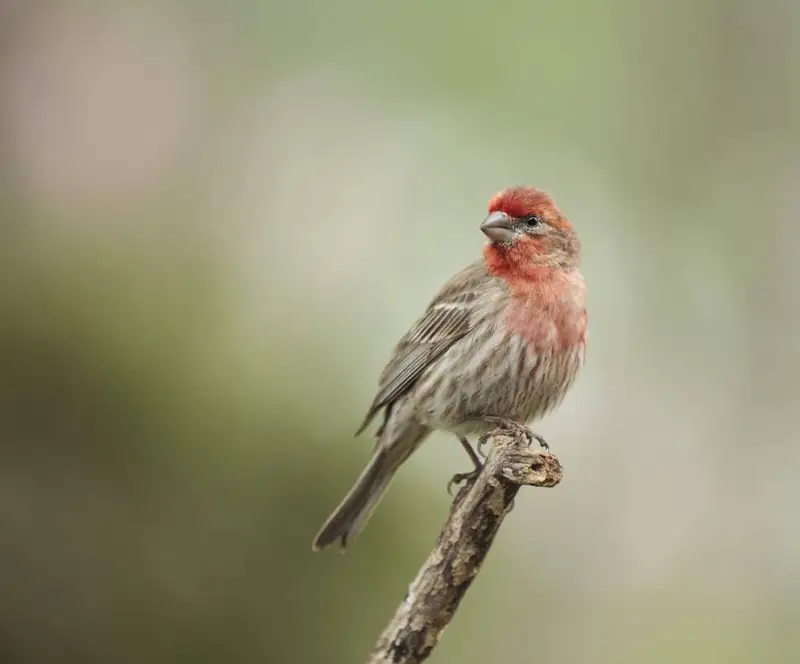
Once a domesticated bird imported into New York before keeping them was deemed illegal, the house finch has not forgotten its roots as a pet.
Though it has spread as far west as Idaho and across the borders to the north and south of the US, the house finch remains a typical backyard feeder.
You can recognize them by their bright rose patch of feathers on their forehead, which stands up like a hairstyle, and also runs across their face and neck. Its stomach is usually white with brown streaks, and its back and wings are gray with white stripes.
These finches tend to overwinter in the same state where they settle, simply moving to lower elevations in winter, which makes this time of year the ideal time to spot one in a park, city, or backyard.
3. Gray-Crowned Rosy Finch
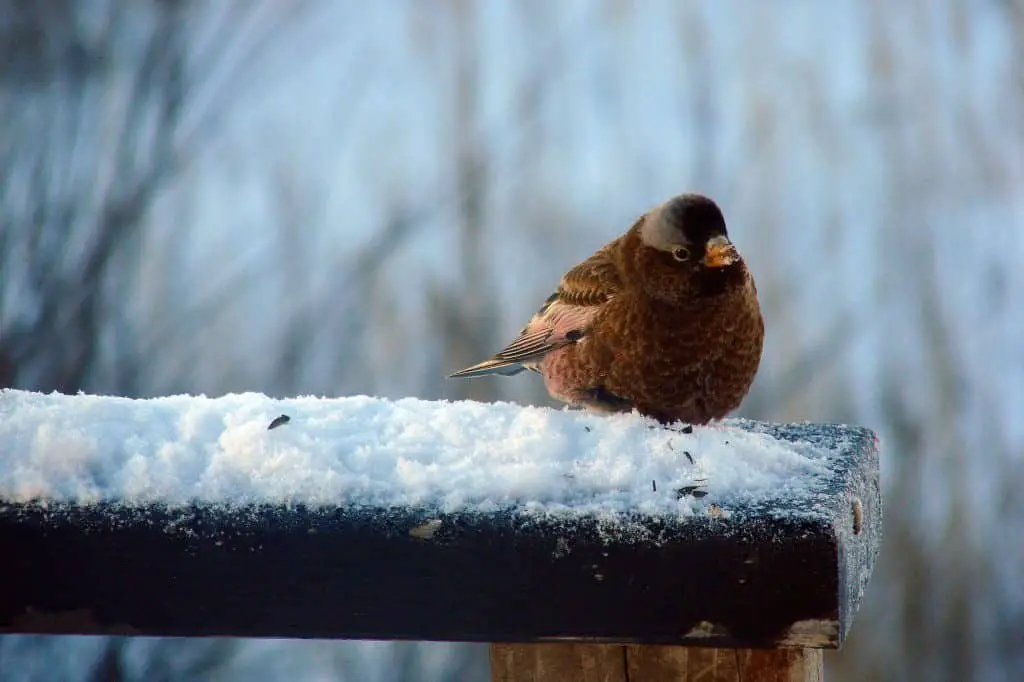
The aptly-named finch visits the states from breeding grounds in west Canada and Alaska, where it will venture into the northwest US into states like Oregon, Montana, and the northern tip of Idaho.
It has a distinct appearance, with the titular gray crown (its entire head, really), a mostly rose-colored body, and wings with varying amounts of dark gray.
Despite its tendency to escape the more brutal winters of the north, this is an arctic bird that thrives in the snow, with its start colors and abundant presence making it much easier to spot.
You’d likely have to travel into the mountains to see a flock, though, as they tend to nest in secluded places like abandoned buildings when contact with humans is a possibility.
4. Pine Siskin
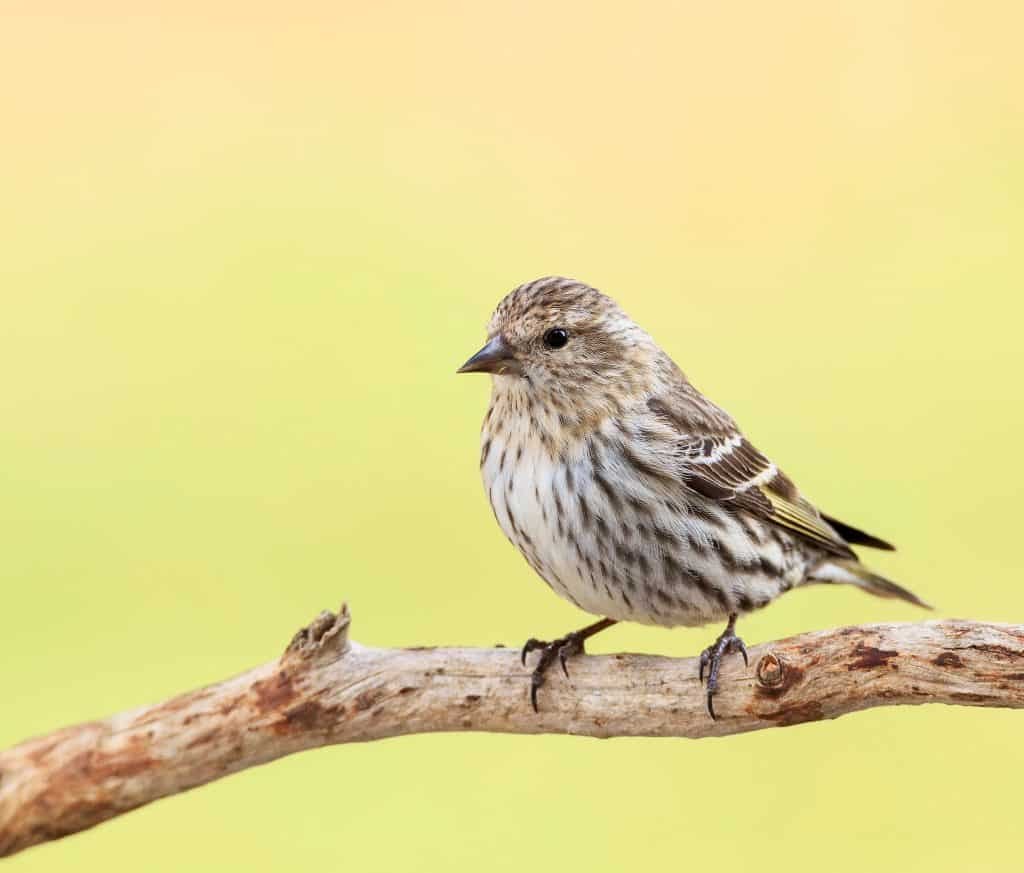
Another of the North Canadian/Alaskan breeders that fly south and settle in winter, the pine siskin is a close relative of the goldfinch, though it is often confused with songbirds.
Unlike the grosbeak, these pine finches are true to their name, gathering in the tall pines of northern Idaho near open fields where foraging is bountiful.
Look for the grayish bodies with yellow tint near the neck and lower body, contrasted against black and white striped wings. Siskins are not averse to bird feeders, though their tendency is to remain hidden.
5. Pine Grosbeak
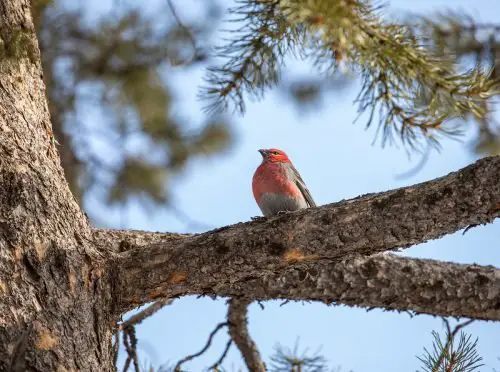
In Idaho, this finch gathers near the borders of Montana and Canada, primarily in the crisp air and pine trees of the mountains when food becomes scarce farther north.
These are perhaps the “rosiest” of the rosy-finches, despite its naming convention, since its entire body is a bright rose color which can easily just be called pink.
The wings might be gray or brown, with white stripes, and there is often a patch of gray near the legs on males, which covers most of the stomachs in females.
The ‘pine’ does indicate this bird loves conifers, though it’s a bit of a misnomer as they are just as likely found in deciduous trees in winter. Like the house finch, this bird is unusually comfortable with human contact, and will often just remain still as we pass by.
6. Cassin’s Finch
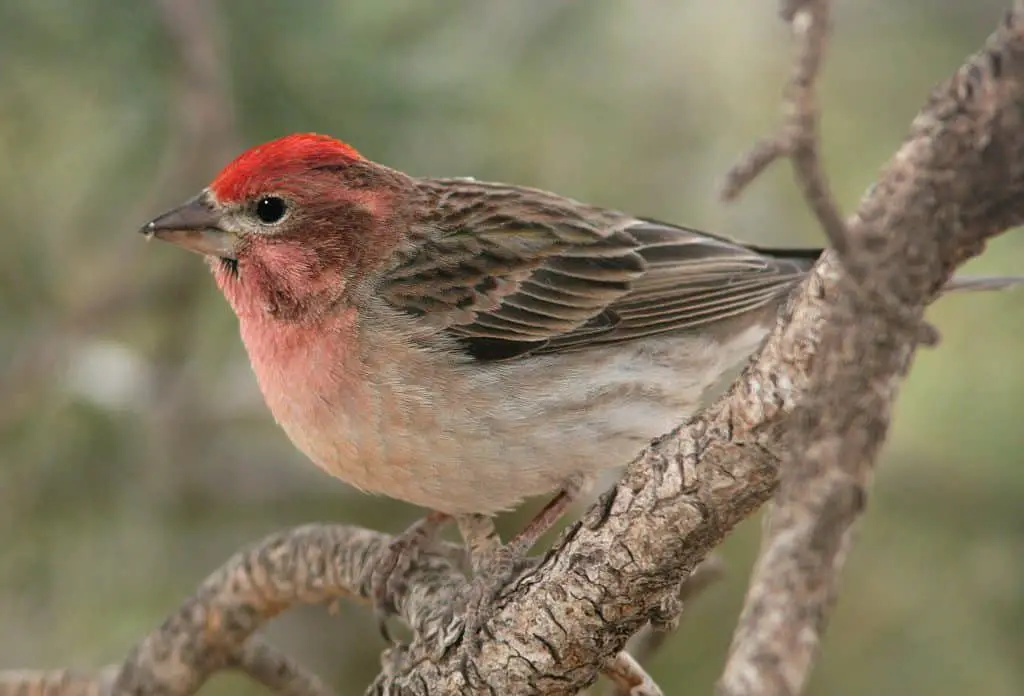
This is yet another of the rose-colored finches that inhabit North America. As it breeds in the Calgary region directly north of Idaho, Cassin’s finches like to vacation in the latter during winters when the food is scarce.
Its rose pattern is mostly in the face, neck, and shoulders, blending into the grays of its wings and back, and the whites of its belly.
They can be seen at the tops of pine trees looking for seed and often heard mimicking the calls of other songbirds.
Also, this is a social finch that often groups with several of its own kind or hangs out with other small birds for safety in numbers.
Expect to see them from late fall to early spring, when they usually fly back home as it gets ‘warm’ in Canada.
7. Black Rosy Finch
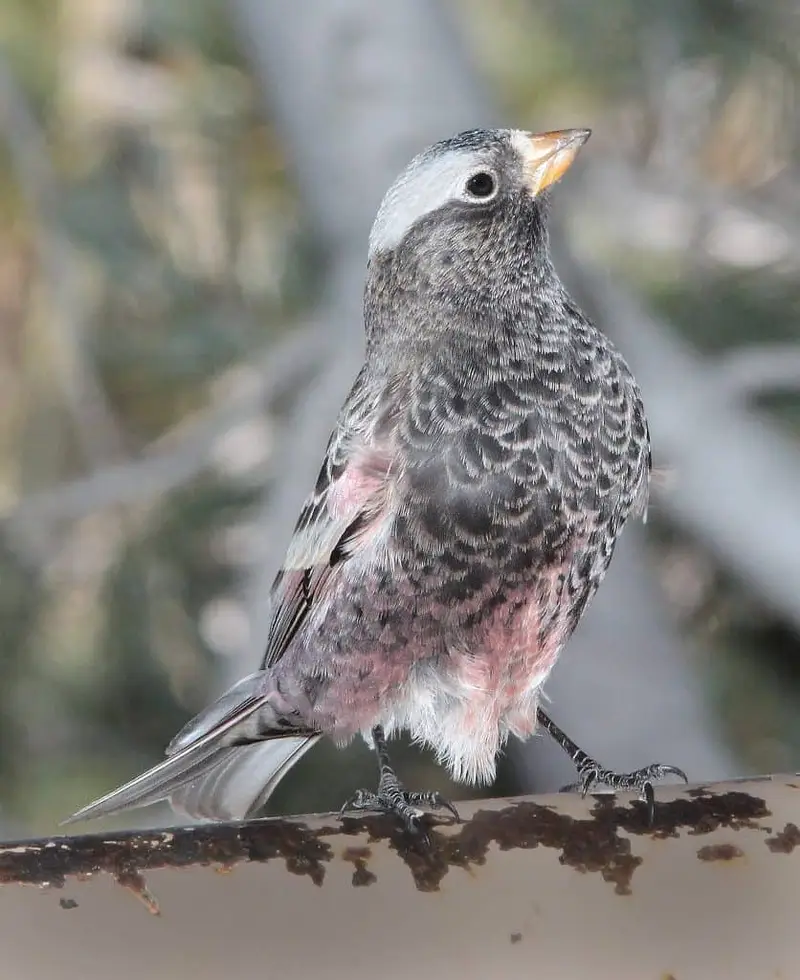
This stout finch can be found in northeast Idahoall year if you’re near the border to Montana, and throughout the state during the winter.
Many fly out of state toward the midwest US, but plenty of the overwinter as well. Black Rosy-Finches like to nest in rocky sections where their nests can be protected by rock formations; this makes them more inclined toward the mountains than most other finches.
Look for their charcoal-colored body, wings, and crown with rose-colored accents on the shoulders and lower torso, and white stripes across the crown and tail. This finch thrives in the snow, and its coloring makes it that much easier to spot moves back and forth between the brush and its nests in the tall pines.
Many people aren’t aware of Idaho’s ideal natural habitat for birds except its residents, which may be partly due to its proximity to Montana, which overshadows its mountains and tall pines.
However, all the finches on this list can be considered year-round residents, even if it’s just frequent visitation giving the illusion of habitation.
References
- https://www.audubon.org/field-guide/bird/american-goldfinch
- https://www.audubon.org/field-guide/bird/house-finch
- https://www.audubon.org/field-guide/bird/pine-siskin
- https://www.audubon.org/field-guide/bird/black-rosy-finch
- https://www.audubon.org/field-guide/bird/gray-crowned-rosy-finch

About Us
We are avid bird-watchers who recently retired, allowing us more time to travel the world. Fortunately, we have managed to visit numerous countries around Europe, Asia, and America. Watching and photographing birds has been a passion for many years and we are making the most of the extra time on our hands!
